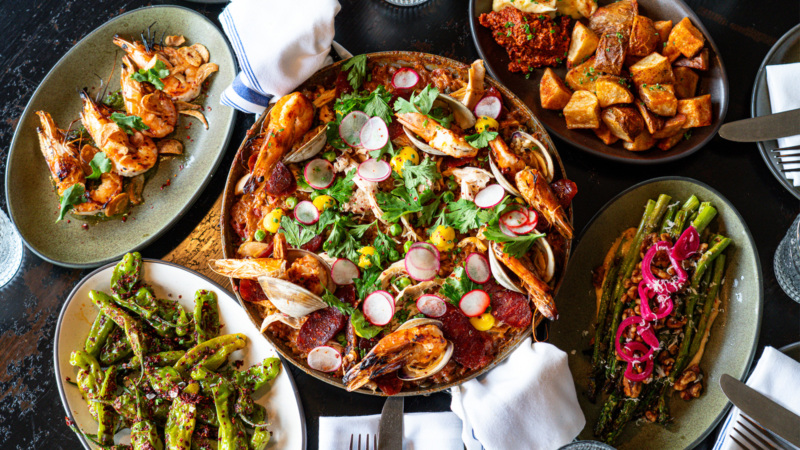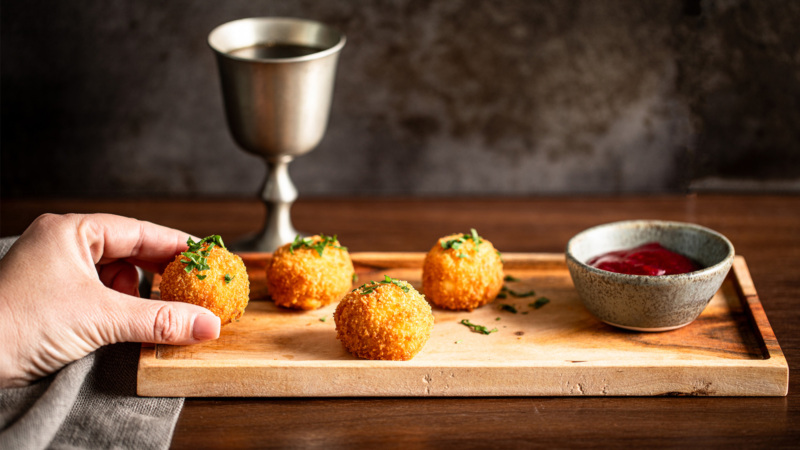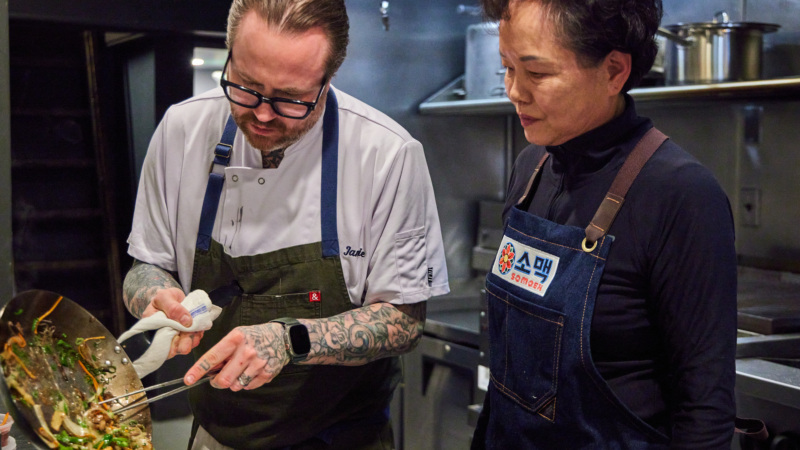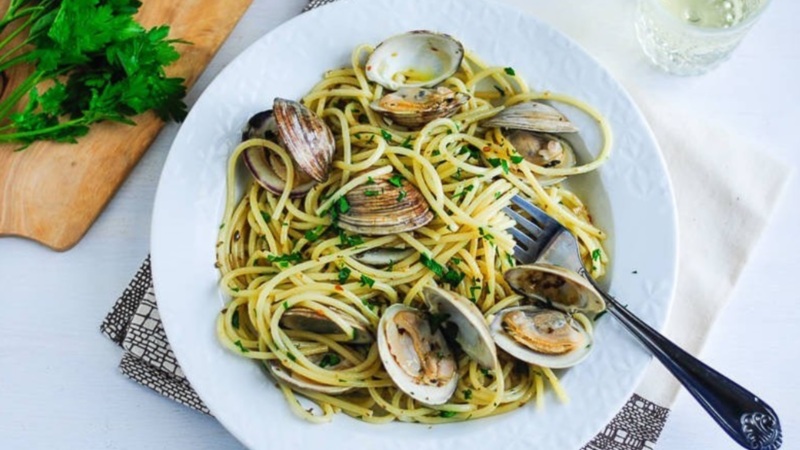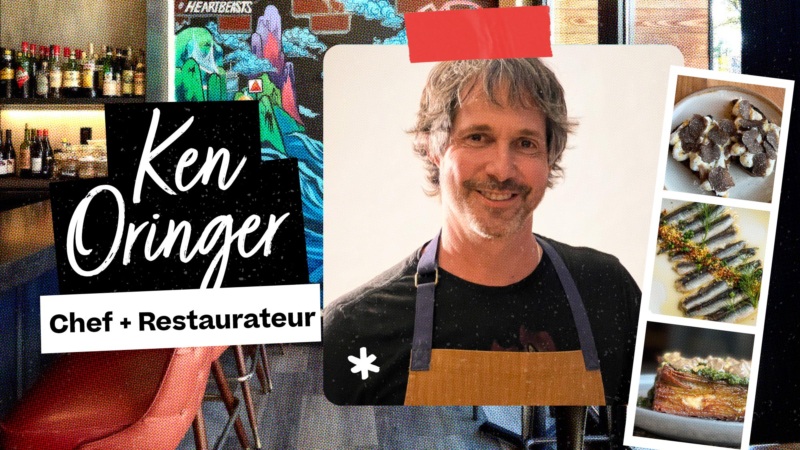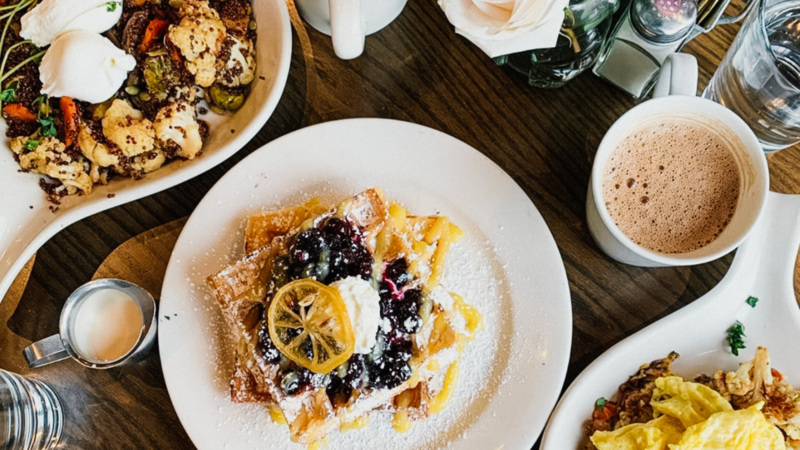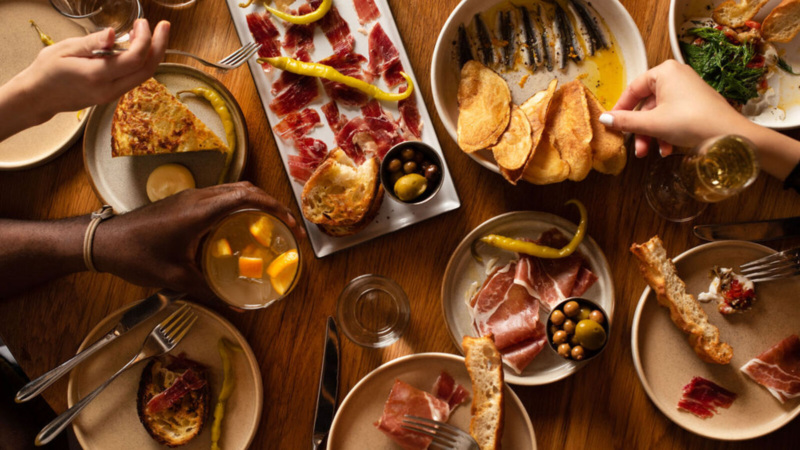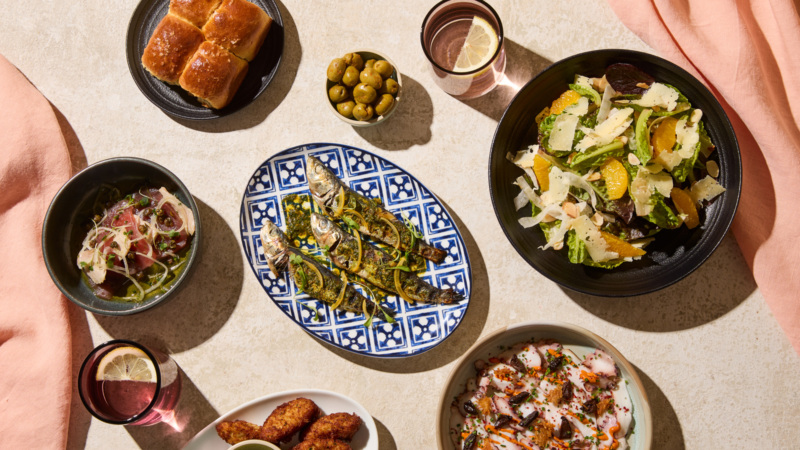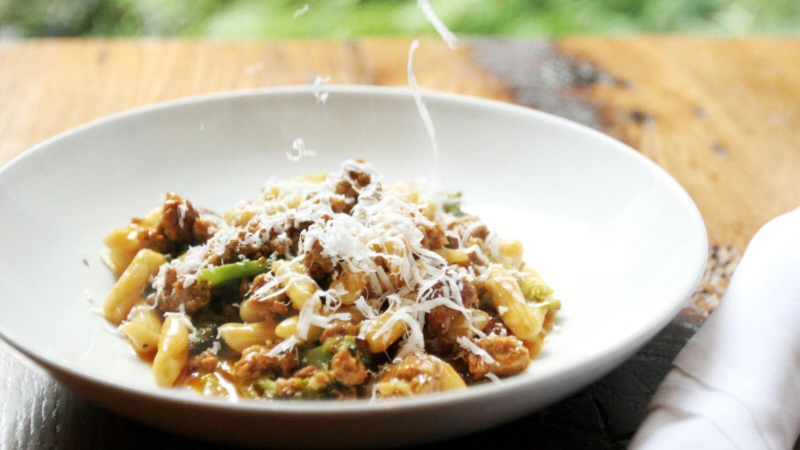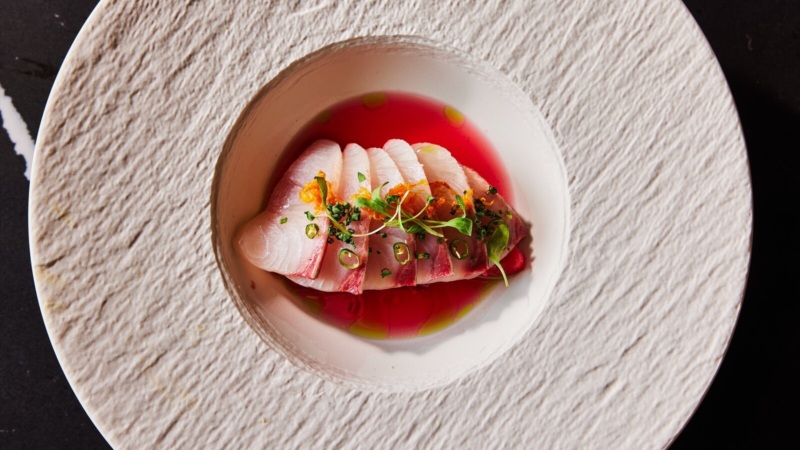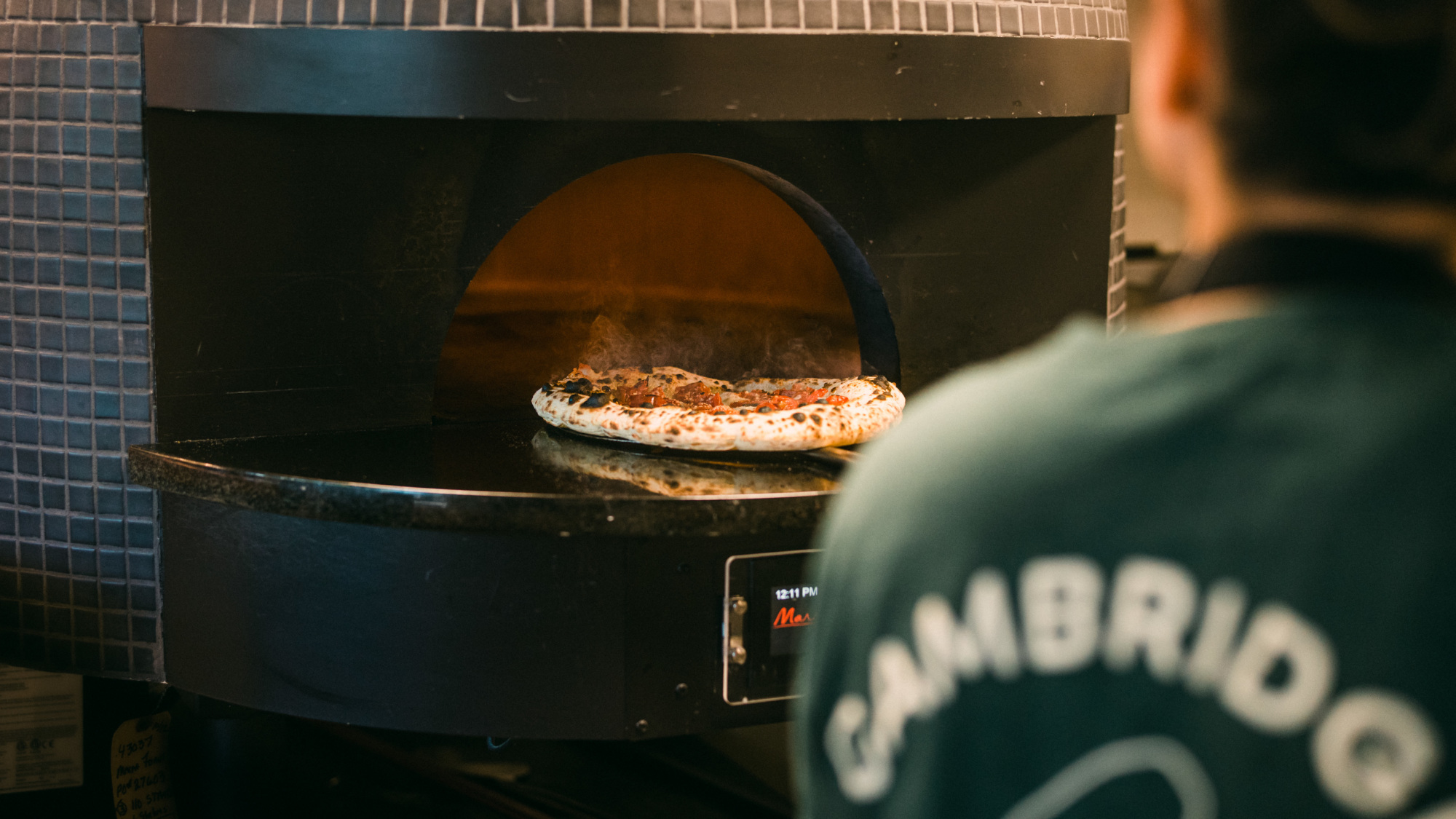
All You Need to Know about Si Cara, and Its Distinctive Pizzas
Before you go to a restaurant, what do you want — or need — to know most? In our series, The Rundown, we’re sharing all the essentials about newly opened (as well as some of your favorite) restaurants.
Next up, we’re at Si Cara, a “pizza bar” in Cambridge. Open since August, the 50-seat restaurant is the first solo venture of Michael Lombardi, chef and partner at South End Italian restaurant SRV. At his new establishment in Central Square, he’s innovating in the pizza space by making a new style of Italian pie.
That’s no small feat, given the sheer number and variety of pizzas available throughout Greater Boston, including (but not limited to) New York slices, New Haven “apizza,” and Rome-inspired square cuts. Then there’s the fact that everyone has an opinion about the “right” way to make the dish. Forging a path through such entrenched loyalties is not for the faint of heart.
Lombardi didn’t set out to disrupt pizza as usual. Si Cara, which translates to “yes, dear” in Italian, is more of a passion project. He’s crafting the kind of pie that he loves to eat, using recipes he has been perfecting at home for years. Recently, we caught up with the chef to learn about “canotto” — a style of pizza that everyone is talking about.
At the same time, he takes his ground-breaking success in stride — delighted that he can share the results of his at-home pizza experiments at his new spot. “If I invited you over to my house over the last four years, we probably would have been drinking natural wine, eating pizza, and having salads in my backyard,” he says.
What he’s serving up, he affirms, is an extension of himself.
1. If you love a pizza’s crust as much as its toppings, you’ll love the “canotto” style.
Si Cara’s pizzas are made in the “canotto” style, characterized by a crust that’s softer and puffier than the standard Neapolitan pie. It’s not surprising that the word translates to “life raft” or “dinghy.” Each puffy-edged creation bears at least a passing resemblance to an inflatable watercraft.
“The canotto style goes outside of the traditional Neapolitan rules, and has a higher concentration of water to flour,” Lombardi explains, drawing a distinction between the version he’s making and the classic Naples-originating pie. That hydration content, plus two days of fermentation prompted by a natural sourdough starter, are key to achieving flavor and texture. “There are people who make this style of pizza, but they don’t necessarily call it canotto,” he clarifies. “They just say, ‘I’m making pizza the way I like it.’” Lombardi definitely falls into that camp.
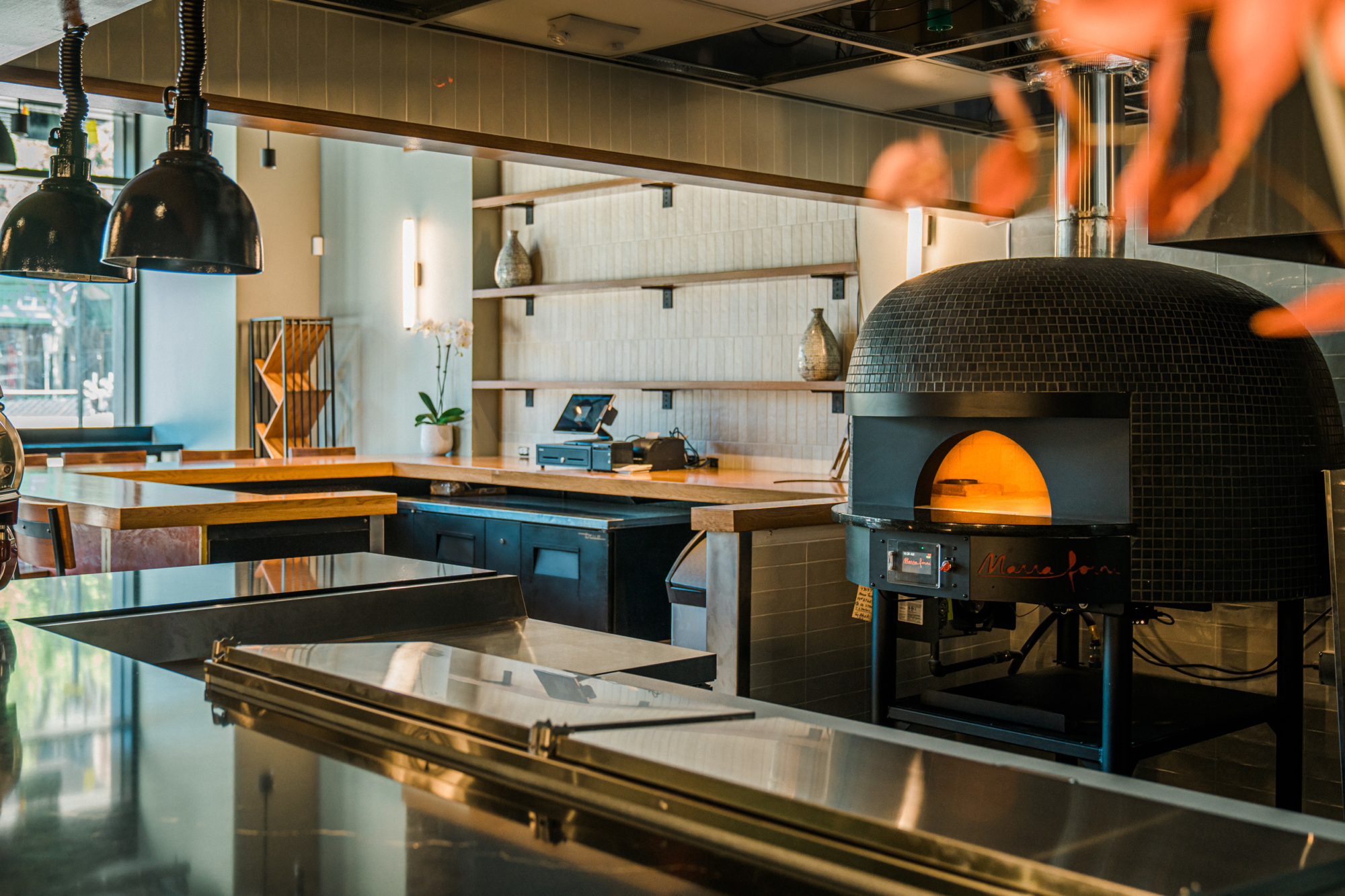
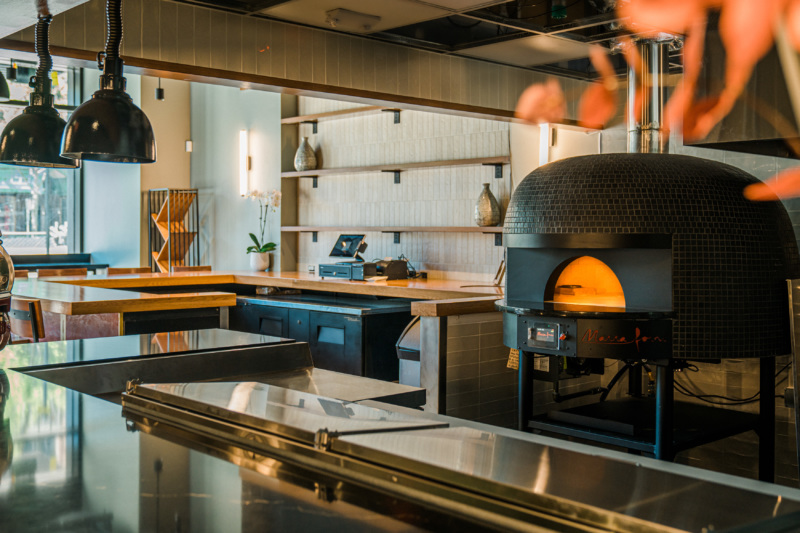
2. The pizza oven’s ripping-hot temperatures do more than char dough.
No matter where you sit in the 1,500-square-foot space, the restaurant’s custom-tiled oven, manufactured by Maryland-based Marra Forni, attracts your attention. It’s the centerpiece of the open kitchen. “There are only a handful of companies that make a gas oven that can get as hot as we need it to be for the style that we’re making,” Lombardi says. “The deck — the stone on the bottom of the oven — is 800 degrees when we’re cooking. Traditionally in dome ovens, the dome is the hottest part, so I would assume the dome is somewhere around 900 degrees or more.”
Such blistering temperatures make Si Cara’s pizza peel-wielding chefs look positively heroic. That oven also sears toppings in a unique way. The margherita pizza offers a case in point: In the intense heat, Pienollo tomatoes on top of the dough need only minutes to collapse into a bright red sauce. Together with fior di latte (cow’s milk mozzarella) and whole basil leaves, the effect of the margherita is more crostini-like rather than long-baked.
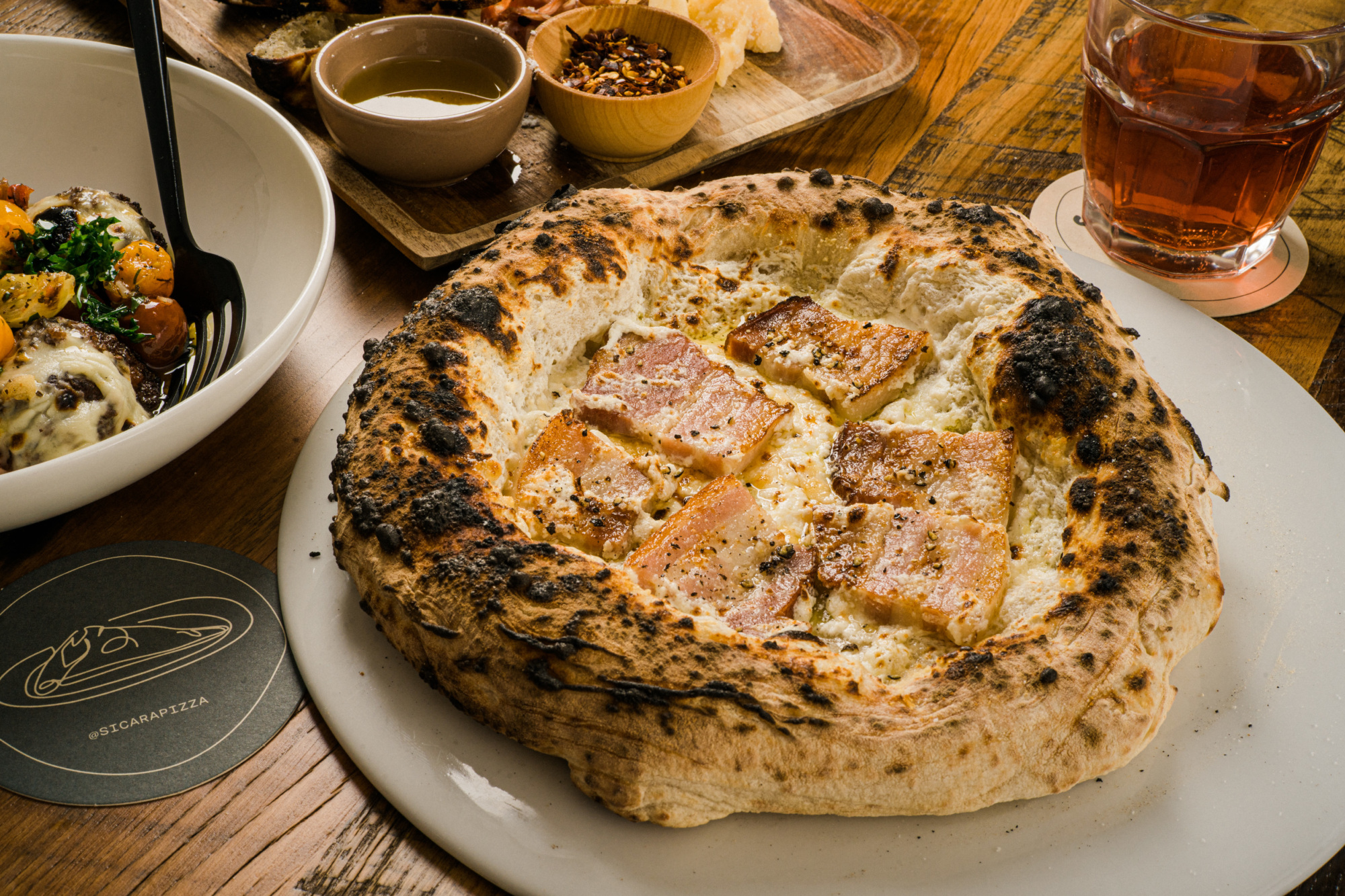
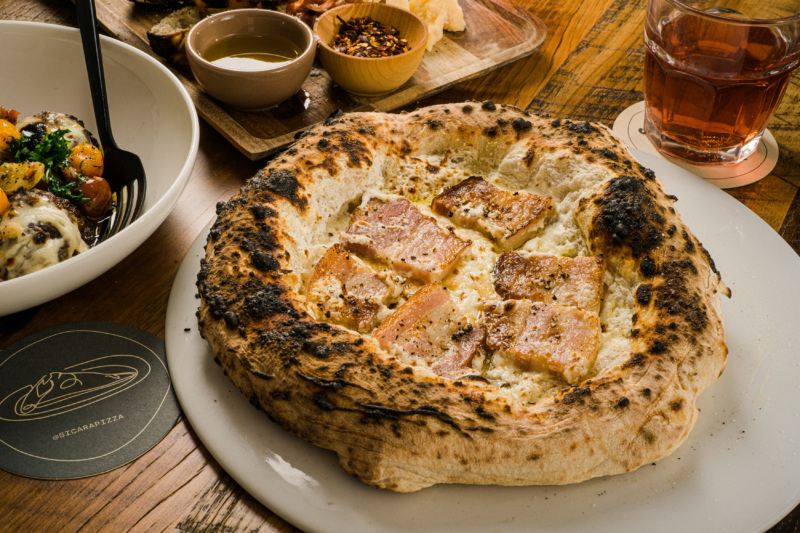
3. Get the Alla Gricia, a pizza inspired by a classic Roman pasta.
Alla Gricia, sporting robust toppings that stand up to the char-speckled crust, is a truly outstanding pizza. It’s named for a classic Roman pasta, for which the sauce is composed of pecorino cheese, guanciale (cured pork jowl), black pepper, and a little pasta water. Here, Si Cara’s kitchen team adds a little cream and roasted garlic to the cheese, then drapes the pie with the sumptuously fatty meat. “The flavors are really classic,” Lombardi notes. “There was nothing to really invent; it was finding that right balance for a pizza.”
4. Don’t be surprised if kimchi appears on one Italian pie.
The mushroom pizza packs a surprise. In addition to wild mushrooms and taleggio cheese, this pie is adorned with leek kimchi. (It’s mild, not spicy, but still recognizable as the Korean condiment.) Lombardi describes Italian and East Asian cuisines as “comfort cuisines” and pays attention to how each uses distinctive ingredients to promote savory flavors. The Italian kitchen leans on items like Parmesan and tomatoes, while East Asian pantries rely on miso and fermented foods as umami-boosters. The chef, who believes that the cuisines play well together, admits to sneaking Asian ingredients into SRV’s dishes. He’s done so for years, even if he hasn’t trumpeted the fact. “But because [Si Cara] is about freedom of expression as a pizzeria, we just went straight on and called it leek kimchi,” he says, referring to the pizza’s menu description. “It adds that element of fermentation, giving the pizza some balance of acidity.”
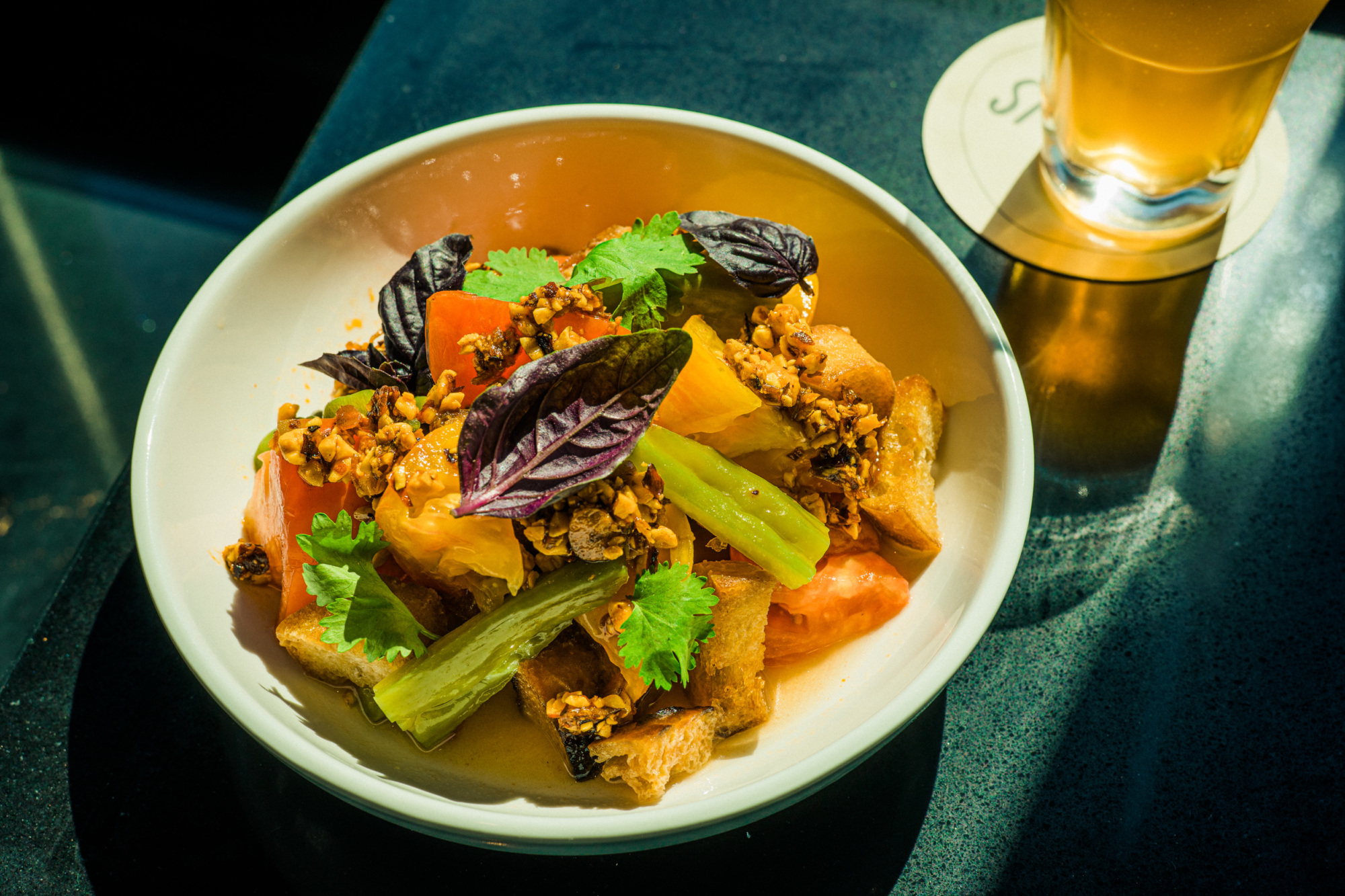
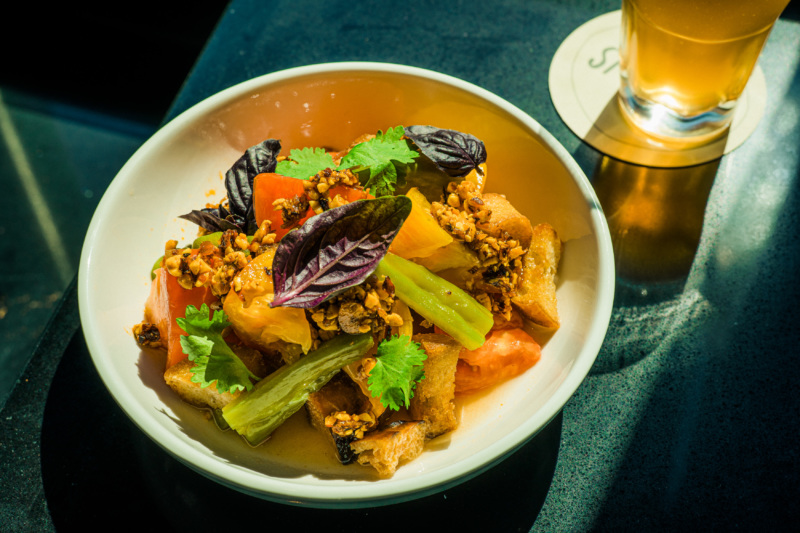
5. A non-traditional bread salad will turn you into a bitter-melon lover.
Bitter melon panzanella is easily the year’s most inventive dish. The riff on Tuscan bread salad takes the bumpy-skinned green gourd — sliced, soaked, and blanched to tame its truculent astringency — and combines it with housemade croutons, sweet tomatoes, and soft herbs like cilantro and opal basil. Peanut-studded chili crisp and fermented fish sauce stand in for traditional vinaigrette. Lombardi gives credit to SRV alum Jess Ngo, Si Cara’s chef de cuisine, who draws from her Italian-Vietnamese heritage to create vivid flavors. He describes the panzanella as “completely her dish.”
6. Naturally leavened pizza deserves something pristine in the glass.
Si Cara’s beverage list, curated by general manager Nicole LeClair, includes a perky array of beer and cocktails; but natural wines — products of organic agriculture, guided by an ethos of nothing added, nothing taken away — are celebrated here. Because Lombardi and his team use only natural leavening in the pizza dough, it makes sense that they showcase wines made with indigenous yeast, the kind that grows spontaneously in vineyards and cellars.
Of course, how these wines pair with food is top of mind. Lombardi describes Si Cara’s selections as “fruit-forward, a little juicy, and drinkable” — in other words, the kind of pours that refresh (rather than fatigue) your palate between bites of pizza.
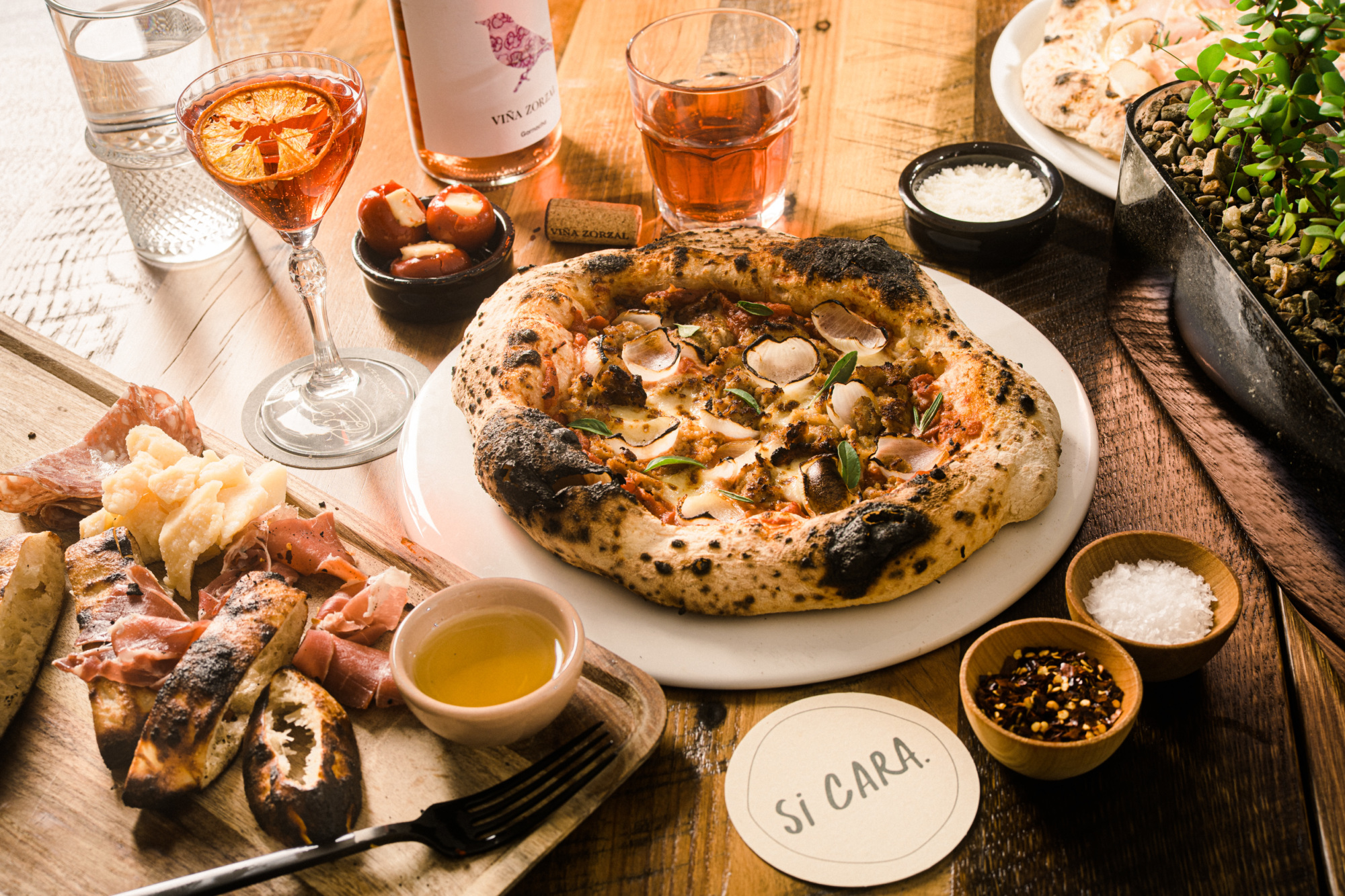
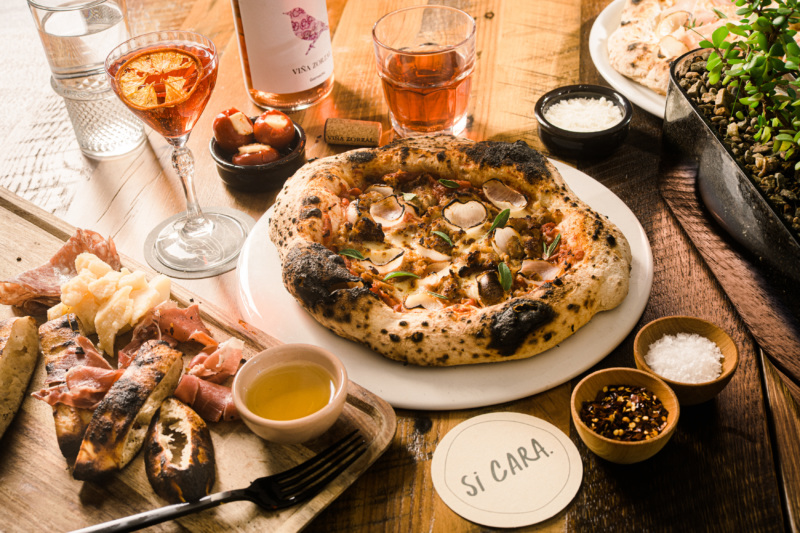
7. Let’s do lunch — even in the middle of the afternoon.
In addition to dinner, this spot now serves lunch. Pan pizza, available by the slice, is on the menu alongside whole pies. Plus, there are seasonally driven salads and fully loaded sandwiches like The Italian (a classic grinder) and a saucy meatball sub. Don’t miss the sandwich simply called Eggplant. It features aubergine two ways: as fried cutlets and as pickled slices, layered with mozzarella, greens, and rustic white bean dip on house-baked ciabatta. And if you’ve ever found your stomach growling between 3 and 4 p.m. — the hour when most restaurants are closed between lunch and dinner — you are in luck. During that time, Si Cara offers a full range of canotto pizzas — with add-ons like a fried egg, salted anchovy fillets, and oozy burrata that make late lunch feel like an occasion.
A final pro tip: On a weekend night, if you’re seated at Table 30 — called the “Romeo and Juliet table” or “the mob-boss table,” depending on which staff member you’re talking to — you and a companion can enjoy a full view of the glowing oven. To your left, you spy the bar; to your right, the long, narrow dining room. Both are packed with customers, all happily noshing.
Ellen Bhang is a Boston-based food and wine writer whose work appears regularly in The Boston Globe and The Food Lens. Follow her on Instagram. Follow Resy, too.










